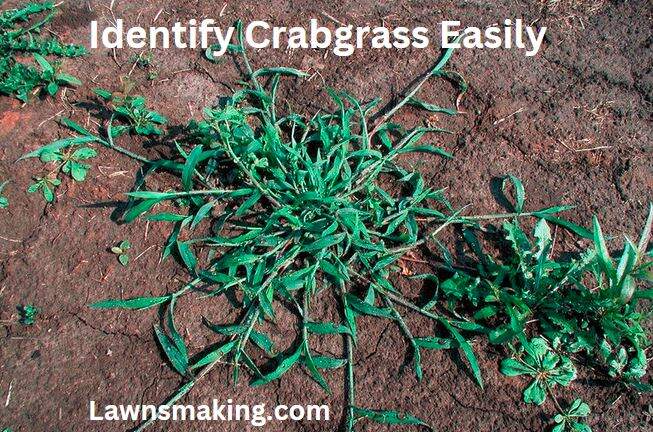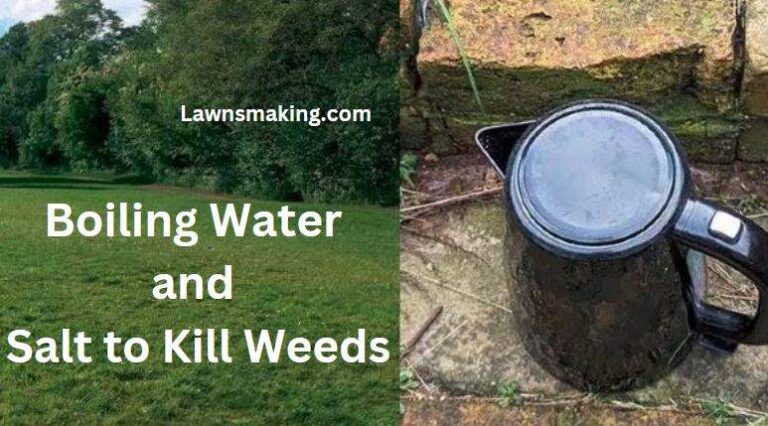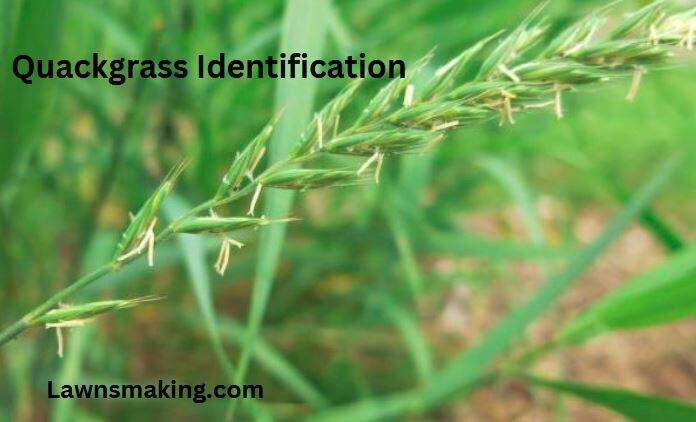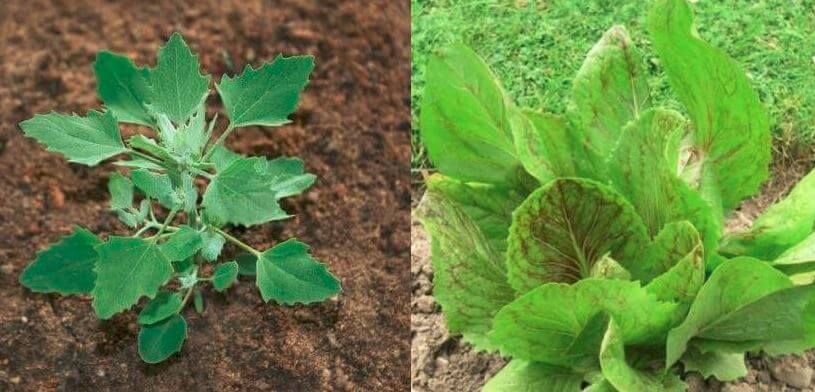
Have you ever found yourself in a situation where you’re unsure whether that leafy green in your garden is lettuce or an imposter? Misidentifying wild greens can lead to bitter surprises or even safety concerns, and that’s a great reason to get acquainted with Weeds that look like lettuce.
Dandelion (Taraxacum officinale), Chicory (Cichorium intybus), and Wild Lettuce (Lactuca canadensis) are the common weeds that look like lettuce. Distinguishing edible lettuce from these deceptive weeds will make the difference between a delightful culinary experience and an unexpected turn of events.
In this article, I’ll explore the main weeds that look like lettuce, starting with Dandelion (Taraxacum officinale) and concluding with Lambsquarters (Chenopodium album). I will also share pictures of these weeds to help discern edible lettuce from its deceptive doppelgangers. Let’s dive in!
Weeds That Look Like Lettuce: Identification, Uses, and Precautions
Understanding the difference between edible lettuce and look-alike weeds is essential for both foragers and gardeners. While some of these weeds may resemble lettuce, they vary significantly in taste, nutritional value, and potential uses.
1. Dandelion (Taraxacum officinale)

Dandelion leaves have an identical shape to lettuce leaves. However, they are lobed or toothed along the edges. The leaves are also deeply notched—forming a rosette at the base.
Unlike lettuce leaves, dandelion leaves are bitter. Additionally, they produce bright yellow flowers on tall stems. Dandelion leaves’ rich vitamin and mineral content explains why it is used in herbal salads and medicine.
Dandelion has long and edible taproots, often used to make herbal tea. When roasted, these roots can be used as a coffee substitute.
Dandelion is a common lawn weed in many regions. According to the American Botanical Council, it is a traditional medicine plant used to remedy liver and digestion issues. This plant can be invasive in lawns and gardens but is a valuable pollinator food source.
Find Out: Can Bermuda Grass Choke Out Weeds?
2. Chicory (Cichorium intybus)
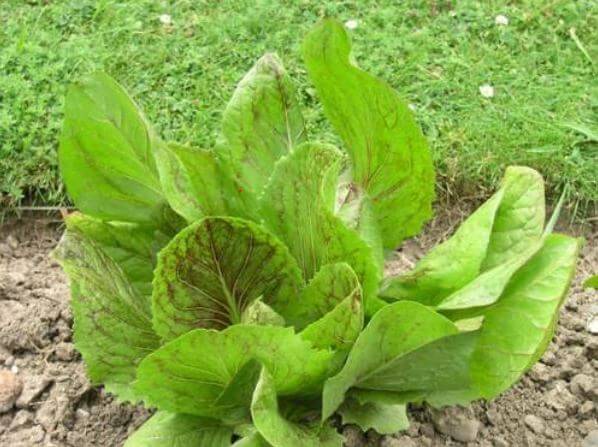
Chicory leaves are similar to lettuce leaves. These leaves have a bitter taste and are more elongated than lettuce leaves. Moreover, they often have a slightly wavy or serrated edge.
Chicory can grow upright or rosettes. You will encounter blue or lavender leaves in chicory.
The weed is another coffee alternative when its roots are roasted and ground. Additionally, chicory is a mainstay ingredient in Mediterranean cuisine and salads.
Chicory leaves are a source of essential minerals and vitamins—including vitamin C and potassium. In some regions, like Italy, France, Belgium, Netherlands, USA, India, and Canada, chicory is intentionally cultivated as a leafy green vegetable.
Many appreciate its unique bitter taste and flavor in cooked dishes or salads.
3. Wild Lettuce (Lactuca canadensis)

Wild lettuce is related to cultivated lettuce and has similar-looking leaves. The plant can grow tall and produce clusters of tiny, yellow flowers. Wild lettuce’s leaves are usually deeply lobed and can have a reddish tinge.
Despite its name, wild lettuce is generally not consumed as a leafy green like cultivated lettuce.
Wild lettuce has a rich history of use in traditional herbal medicine thanks to its sedative properties.
The weed has a bitter and sometimes slightly milky sap. Its leaves can be used as a mild pain reliever and sleep aid in herbal remedies.
According to WebMD, using Wild lettuce can cause side effects such as;
- Allergic reactions
- Digestive issues
- Drowsiness and sedation
- Headaches
- Dry mouth
- Increased heat rate
4. Shepherd’s Purse (Capsella bursa-pastoris)
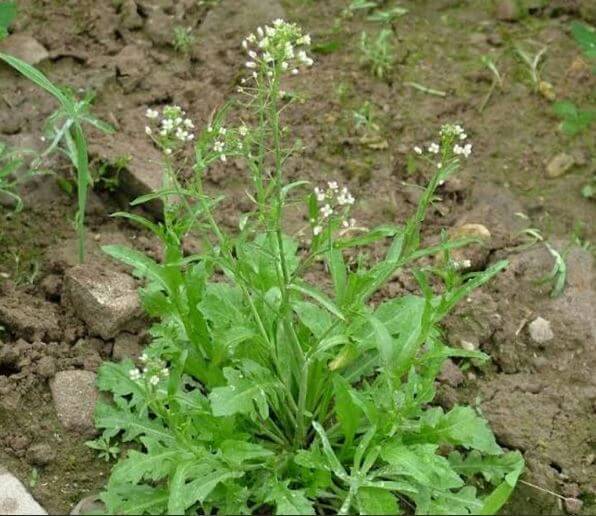
Shepherd’s purse leaves are elongated. They somewhat look like young lettuce leaves and are commonly found in gardens, along roadsides, and in disturbed areas like;
- Construction sites
- Fields and agricultural land
- Trail edges
- Railroad tracks
- Abandoned lots
The weed often produces tiny white flowers and distinctive heart-shaped seed pods. Shepherd’s purse is usually considered an edible weed. Moreover, its leaves can be added to salads.
According to the National Library of Medicine, Shepherd’s purse has a long history of use in traditional medicine as a remedy for numerous ailments, including;
- Nosebleeds
- Hemorrhages
- High blood pressure
- Menstrual disorders
- Bleeding and wound healing
The plant gets its name from its seed pod’s unique shape. Shepherd’s purse leaves are rich in vitamins, especially K.
The plant is considered a winter annual weed and is a food source for some insects.
5. Plantain (Plantago major)

Plantain leaves are similar to lettuce leaves but are more elongated and have parallel veins. The edges of these leaves are smooth and not toothed. Additionally, plantain often creeps along the ground and has small yellow flowers.
The weed has a long history of medicinal use for various purposes, including soothing insect bites and wound healing.
Plantain is a common weed in grassy areas such as lawns, and its leaves can be used as a poultice for skin irritations. The plant contains numerous nutrients and vitamins, such as A and C.
Plantain seeds can be consumed and are often used in herbal remedies. Please note that the plant has different names, including “broadleaf plantain.”
6. Purslane (Portulaca oleracea)

Purslane leaves look like lettuce leaves and are succulent. Purslane leaves are also thicker and have a slightly glossy appearance. The weed often creeps along the ground and has tiny yellow flowers.
You can consume purslane. Moreover, it has a mild, slightly tangy flavor. The weed is rich in omega-3 fatty acids, among other valuable minerals and vitamins.
Purslane is commonly used in stir-fries, salads, and other cuisines worldwide. The weed is highly drought-tolerant—explaining its ability to thrive in harsh conditions.
The plant is often considered very nutritious, making it a valuable addition to diets. According to the National Institutes of Health, Purslane has a reputation as a superfood due to its nutrient content, which consists;
- Minerals such as calcium, magnesium, potassium, and iron
- Vitamins such as Vitamin A, C, E, and B9
- Omega-3 fatty acids
- Antioxidants
- Dietary fiber
7. Hairy Bittercress (Cardamine hirsuta)

Hairy bittercress has tiny compound leaves resembling young lettuce leaves. The leaves are also pinnately divided with toothed leaflets. Also, note that this plant produces clusters of tiny white flowers.
Hairy bittercress gets its name from its bitter taste and is often found in moist, shaded areas. Additionally, it is an annual weed that can quickly spread in garden beds.
Being edible, many people use hairy bittercress as a garnish or in salads. Nevertheless, gardeners consider it a nuisance due to its rapid growth.
Lastly, hairy bittercress’s white flowers are distinctive and can help identify the plant. The plant has nutritional value thanks to its nutritional components;
- Vitamins A, C, and K
- Minerals such as calcium, magnesium, and potassium
- Dietary fiber
- Protein
- Iron
8. Lambsquarters (Chenopodium album)
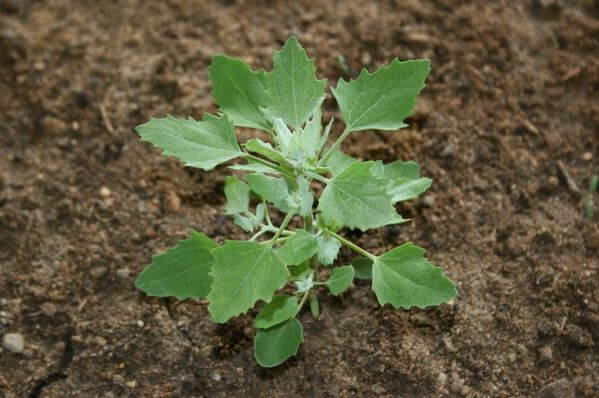
Lambsquarters leaves are similar in shape to some lettuce varieties but are usually covered in a powdery substance. Its leaves have a mealy texture and have serrated edges.
The plant can grow upright or in a bushy form and sometimes produces green flowers.
Lambsquarters are considered edible and popularly known as “wild spinach.” Moreover, it is rich in minerals like calcium and iron, plus vitamins A and C.
You can use lambsquarters in place of spinach in cooked dishes or salads.
Please note that the white powdery substance on its leaves is a natural defense mechanism. The plant is a common weed in gardens, waste areas, and fields.
Lambsquarters is part of the Chenopodiaceae family, which features edible plants like beets and quinoa.
How Do I Identify a Lettuce Plant?
Identifying a lettuce plant involves watching out for its smooth, oval, or elongated leaves, growing in a rosette arrangement—forming a cluster of leaves emerging from the central point near the base of the plant. Lettuce leaves have smooth margins, meaning the edges aren’t serrated or toothed.
Additionally, lettuce leaves have prominent, branching veins that run through the leaf. These veins are often lighter in color than the rest of the leaf.
Please note the plant’s leaves come in various shades of green, ranging from light green to darker green.
How Many Types of Lettuce Are There?
There are four main types of lettuce: Iceberg Lettuce (Lactuca sativa), Romaine Lettuce (Lactuca sativa), Butterhead Lettuce (Lactuca sativa), and Leaf Lettuce (Lactuca sativa). In addition to these main types, numerous varieties and cultivars have unique characteristics.
Some popular lettuce varieties include Batavian, Radicchio, Frisee, Arugula, Endive, and Little Gem. These are just a few examples, and there are many more lettuce varieties and cultivars to explore, each offering its texture profile and unique flavor.
Which Lettuce Is Best to Eat?
Leaf Lettuce (Lactuca sativa) is the best lettuce to eat. Leaf Lettuce has a mild flavor, neither bitter nor bland, with its mild taste complementing a wide range of ingredients and dressings without overpowering them. It also provides essential nutrients and vitamins such as A and K.
Leaf Lettuce is also rich in dietary fiber and antioxidants—contributing to a nutritious and balanced diet. Due to its mild flavor, Leaf Lettuce can be used in a variety of culinary applications, including;
- Simple garden salads
- Mixed greens salads
- Sandwiches
- Wraps
- Garnish for various dishes
Final Thoughts
In the gardening world, the line between friend and foe can sometimes blur, especially when identifying plants that mimic our favorite greens.
We’ve explored 8 weeds that look like lettuce, from the Dandelion’s toothed leaves to the mild juiciness of purslane. While these look-alikes can trick your eyes at first glance, understanding the subtle differences in leaf shape, texture, and growth habits is essential for accurate identification.
